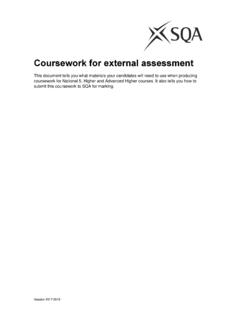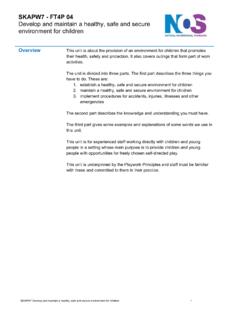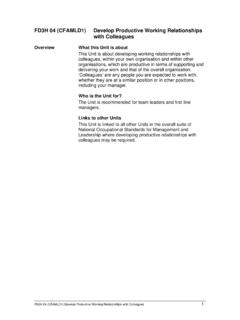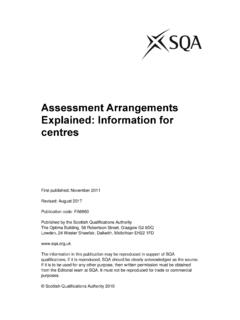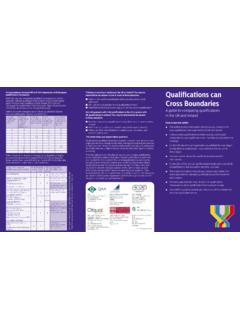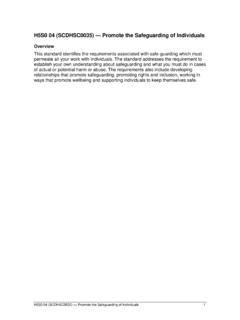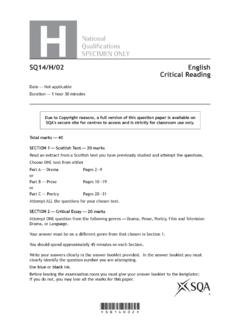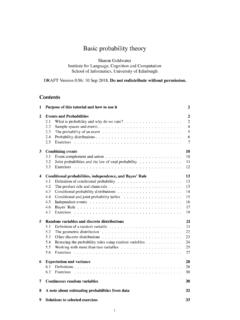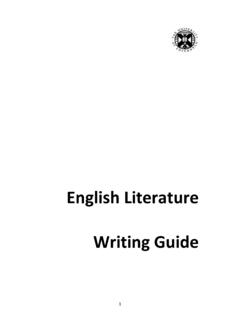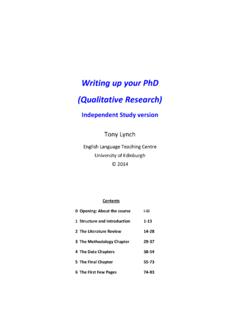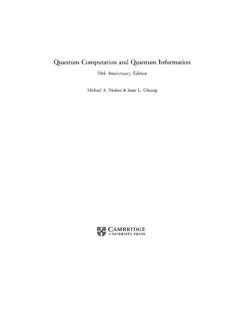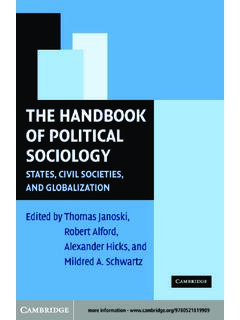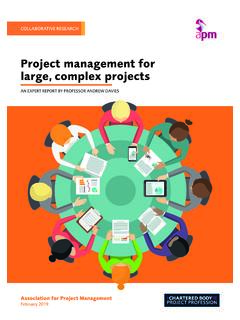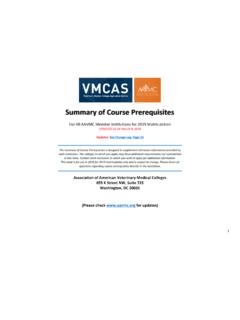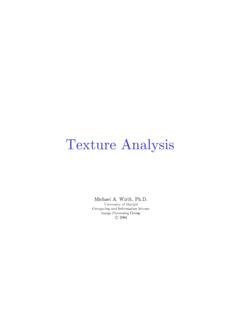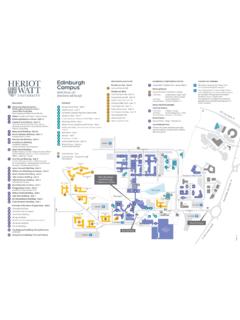Transcription of SCQF LEVEL DESCRIPTORS - SQA
1 SCQF LEVEL DESCRIPTORS //////////////////////////////////////// //////////////////////////////////////// /////////////////////////////////CONTENT SFOREWORD 01 LEVEL DESCRIPTORS INTRODUCTION 02-03 GLOSSARY 04-07BY CHARACTERISTIC 08 CHARACTERISTIC 1: KNOWLEDGE AND UNDERSTANDING 08 / 09 CHARACTERISTIC 2: PRACTICE: APPLIED KNOWLEDGE, SKILLS AND UNDERSTANDING 10 / 11 CHARACTERISTIC 3: GENERIC COGNITIVE SKILLS 12 / 13 CHARACTERISTIC 4: COMMUNICATION, ICT AND NUMERACY SKILLS 14 / 15 CHARACTERISTIC 5: AUTONOMY, ACCOUNTABILITY AND WORKING WITH OTHERS 16 / 17BY LEVEL 18 LEVEL 1 & LEVEL 2 18 / 19 LEVEL 3 & LEVEL 4 20 / 21 LEVEL 5 & LEVEL 6 22 / 23 LEVEL 7 & LEVEL 8 24 / 25 LEVEL 9 & LEVEL 10 26 / 27 LEVEL 11 & LEVEL 12 28 / 01////////////////////////////////////// //////////////////////////////////////// ///////////////////////////////////The LEVEL DESCRIPTORS are the building blocks with which the SCQF is constructed and, as the Framework itself seeks to be utilised in the widest possible range of assessed learning in Scotland, they need to be inclusive.
2 Clearly they must also be fit for purpose in terms of ensuring the integrity of the Framework and be internally consistent and educationally current DESCRIPTORS have been in use for over a decade and so the SCQF Partnership Board, as guardians of the Framework, agreed that it was timely to undertake a review. Not only has the range of contexts in which they are being used broadened significantly, but also best practice would indicate that regular review considering a range of factors and drivers is helpful. On the FOREWORDRay HarrisChair SCQF Partnership Quality Committeeadvice of their Quality Committee, the Board assessed that a radical overhaul was not needed and indeed concluded that the number of levels should not be part of the review since they still successfully mapped into the Scottish educational Quality Committee was asked to oversee the review and appointed consultants to support that process.
3 The first phase of the consultation indicated that there was indeed no appetite or need for radical review and indicated that we should retain the five underpinning characteristics. However those using the Framework did feel that there was a real need and opportunity to ensure that the language reflected more fully both the occupational and professional sectors. In addition there was support to tighten up on the consistency and progression of terminology across levels and to generally tidy up any possible versions of the revised DESCRIPTORS were consulted on widely with stakeholders and users of the Framework over a 12 month period and the final version was tested in detail by a number of Credit Rating Bodies to ensure that the revised DESCRIPTORS did not alter the LEVEL or credit rating of their existing portfolio.
4 A number of times during the consultation the notion of a glossary of terms was mooted, not an exhaustive one but sufficient to allow users to understand the progressive use of terminology, and this has been developed to be published alongside the revised Quality Committee and the Partnership Board have now approved the revised LEVEL DESCRIPTORS and are grateful to the many colleagues who participated in the consultations both online and face-to-face in interviews and at the various events held during the process. They would also like to thank the consultants who worked throughout the process checking and rechecking understanding and buy-in from the wide range of stakeholders which led to this final SCQF is Scotland s Lifelong Learning Framework.
5 It was developed in 2001 to provide an agreed means of recognising and valuing learning. It provides a shared context for learning in Scotland. It was created by bringing together all Scottish mainstream and non-mainstream qualifications into a single unified Framework. Within the overall context of lifelong learning, the aims of the SCQF are to: help people of all ages and circumstances to access appropriate education and training over their lifetime to fulfil their personal, social and economic potential; and enable employers, learners and the public in general to understand the full range of Scottish qualifications, how the qualifications relate to each other and how different types of qualifications can contribute to improving the skills of the SCQF has 12 levels which provide an indication of the complexity of qualifications and learning programmes.
6 SCQF levels are based on a single set of LEVEL DESCRIPTORS that are the common reference points and definitions which provide a way of recognising learning that is outcome-based and quality-assured, irrespective of whether that learning is academic, vocational, non-formal or 02 / 03////////////////////////////////////// //////////////////////////////////////// ///////////////////////////////////THE SCQF LEVEL DESCRIPTORSL evel DESCRIPTORS are fundamental to the SCQF. The SCQF LEVEL DESCRIPTORS describe in broad terms what learners should be able to do or demonstrate at a particular LEVEL . Within an integrated framework, these LEVEL DESCRIPTORS provide a common vocabulary to assist with the comparison of qualifications and learning LEVEL descriptor has five characteristics which provide a reference point for determining the LEVEL of a qualification, learning programme, module and unit of learning or for the recognition of prior learning (RPL).
7 They are not intended to give precise or comprehensive statements of required learning for individual qualifications. The five characteristics are: Knowledge and understanding; Practice: Applied knowledge, skills and understanding; Generic cognitive skills; Communication, numeracy and ICT skills; and Autonomy, accountability and working with THE SCQF LEVEL DESCRIPTORSThe following key points are important to remember when you are using the SCQF LEVEL DESCRIPTORS : the SCQF LEVEL DESCRIPTORS should be seen as a useful guide to be used with other reference documents such as subject benchmarks, arrangements documents and other relevant programmes on the Framework.
8 The characteristics of the LEVEL DESCRIPTORS are generic in nature and may not all be relevant for every qualification or learning programme; they provide a general overview of what would be expected of a typical learner at a specified SCQF LEVEL . As some of the characteristics may not be relevant it is not necessary that all are met; when deciding an appropriate LEVEL for a qualification or learning programme, it is helpful to look at DESCRIPTORS across a range of levels to determine the best fit ; and the vocabulary of the SCQF LEVEL DESCRIPTORS may provide appropriate wording that can be used to describe learning for programme descriptions, learning outcomes and assessment 2012 REVISIONST hese revised LEVEL DESCRIPTORS (August 2012) supersede all previous versions including those in the SCQF Handbook: User Guide and the previously published A5 LEVEL DESCRIPTORS booklet.
9 More detailed information regarding the specific amendments that have been introduced can be accessed at , where it is possible to compare old and new versions to track the an extensive and rigorous review process, the SCQF LEVEL DESCRIPTORS were revised in 2012. This glossary provides an explanation of terms used in describing them. Consultation during the review indicated a general consensus amongst users and practitioners that a glossary of key terminology used in the DESCRIPTORS would be extremely helpful, serving to assist and clarify interpretation in context. This glossary draws on pre-existing SCQF glossaries, standard dictionary definitions and, crucially, the context in which the term is being used.
10 It is designed as a pragmatic tool to assign meanings to words in a highly specific context that of the SCQF LEVEL DESCRIPTORS . As such, its definitions are not absolute; rather, they are intended to amplify and decode the review was conducted on the basis that any change to the DESCRIPTORS must not be made simply for its own sake. This has had implications for the glossary which, in seeking to standardise and explain usage within the DESCRIPTORS , works with the grain of terms already in use rather than import new ones which could, potentially, destabilise the DESCRIPTORS . The glossary is not comprehensive: only the terms which require contextualisation, explanation or mitigation regarding their use or meaning in the context of the SCQF LEVEL DESCRIPTORS have been included.
